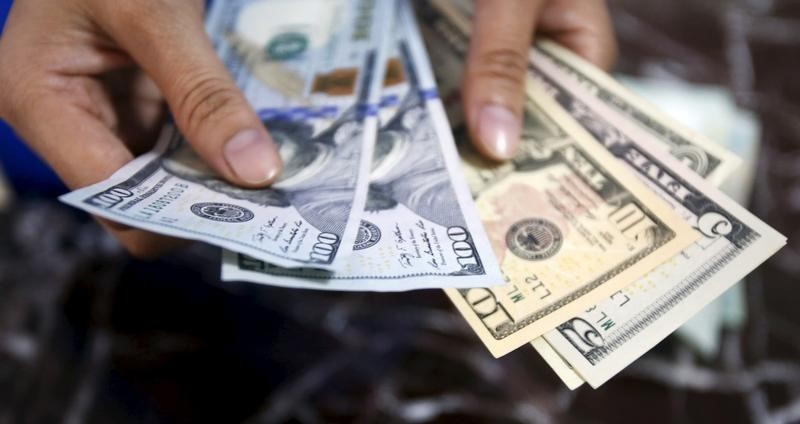By Peter Nurse
Investing.com - The dollar handed back some gains in early European trading Wednesday as bond yields edged off highs, but remained in demand as fiscal stimulus and an aggressive vaccine rollout are seen prompting a strong U.S. economic recovery.
At 3:15 AM ET (0815 GMT), the US Dollar Index, which tracks the greenback against a basket of six other currencies, was down 0.1% at 93.240, having earlier hit a new 4-month high at 93.472.
USD/JPY rose 0.4% at 110.74 and EUR/USD rose 0.1% to 1.1726. GBP/USD was up 0.1% at 1.3746, after U.K. GDP increased by 1.3% between October and December last year from the previous three-month period, compared with an earlier estimate of 1.0% growth, while the risk-sensitive AUD/USD rose 0.2% to 0.7610.
The trickle lower in the dollar comes as U.S. yields struggled to hold onto the new highs, with the benchmark 10-year Treasury yield seen just above 1.72% having traded above 1.78% on Tuesday.
However, this slip in yields is likely to be just a period of profit-taking as data continued to point to underlying strength in the U.S. economy.
Tuesday’s CB Consumer Confidence index soared to 109.7 in March, the highest level since the beginning of the pandemic, and this increased confidence is expected to be reflected in the U.S. employment report for March, including non-farm payrolls, which is due out on Friday.
Ahead of that comes the ADP nonfarm employment data for March, due later Wednesday.
This U.S. economic strength is one of the reasons the International Monetary Fund will upgrade its forecast for global economic growth next week, managing Director Kristalina Georgieva said on Tuesday, from January’s projections of 5.5%.
That said, “the key event of the week is set to be the unveiling by President Biden of his infrastructure plan on Wednesday, with another bold fiscal move (some media reports suggested the stimulus plan may be as large as $4tn) further endorsing the narrative of U.S. exceptionalism in the economic recovery,” said analysts at ING, in a note.
Elsewhere, USD/CNY fell 0.2% to 6.5577, after the China’s manufacturing Purchasing Managers' Index for March came in at 51.9, higher than February’s 50.6 reading. The non-manufacturing PMI was 56.6, surpassing its February reading of 51.4.
The Caixin manufacturing and services PMIs, which look at the private sector, are due later in the week.
